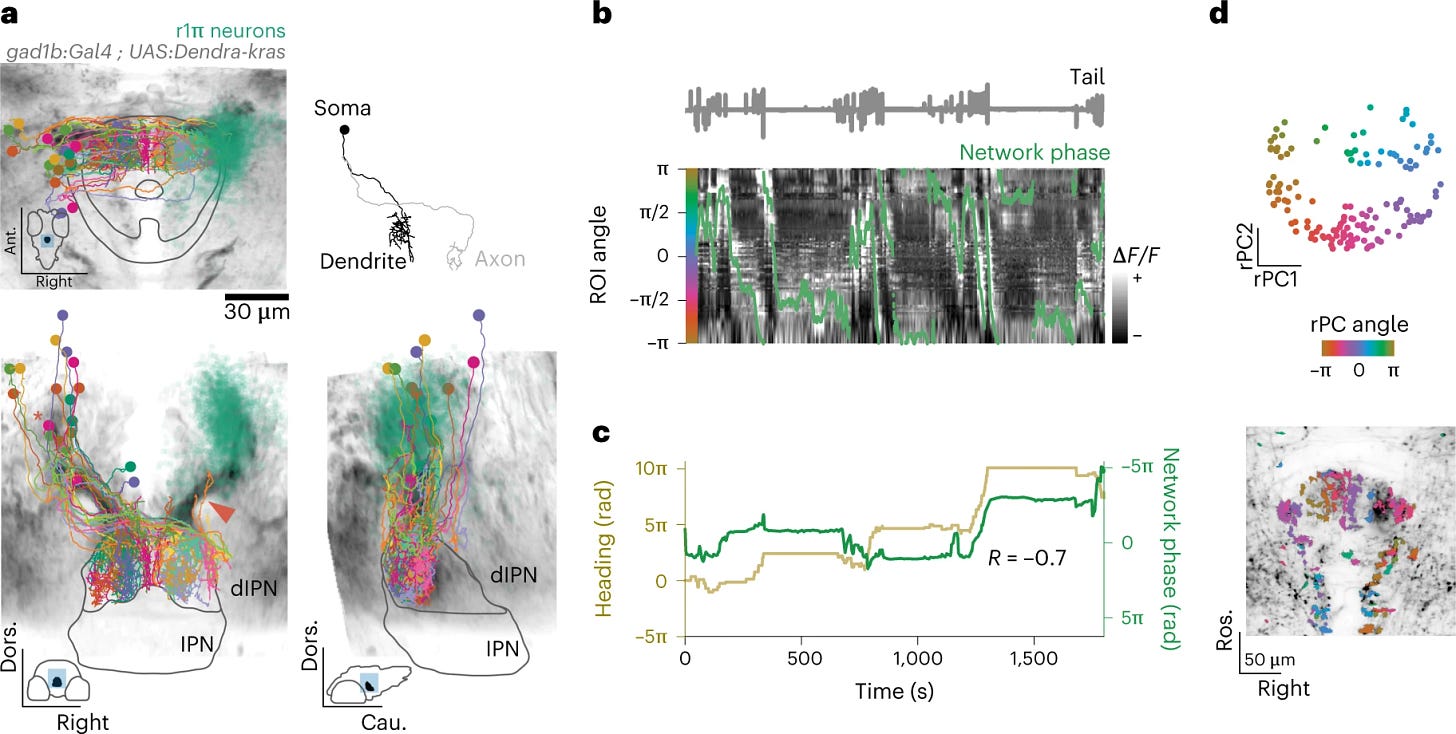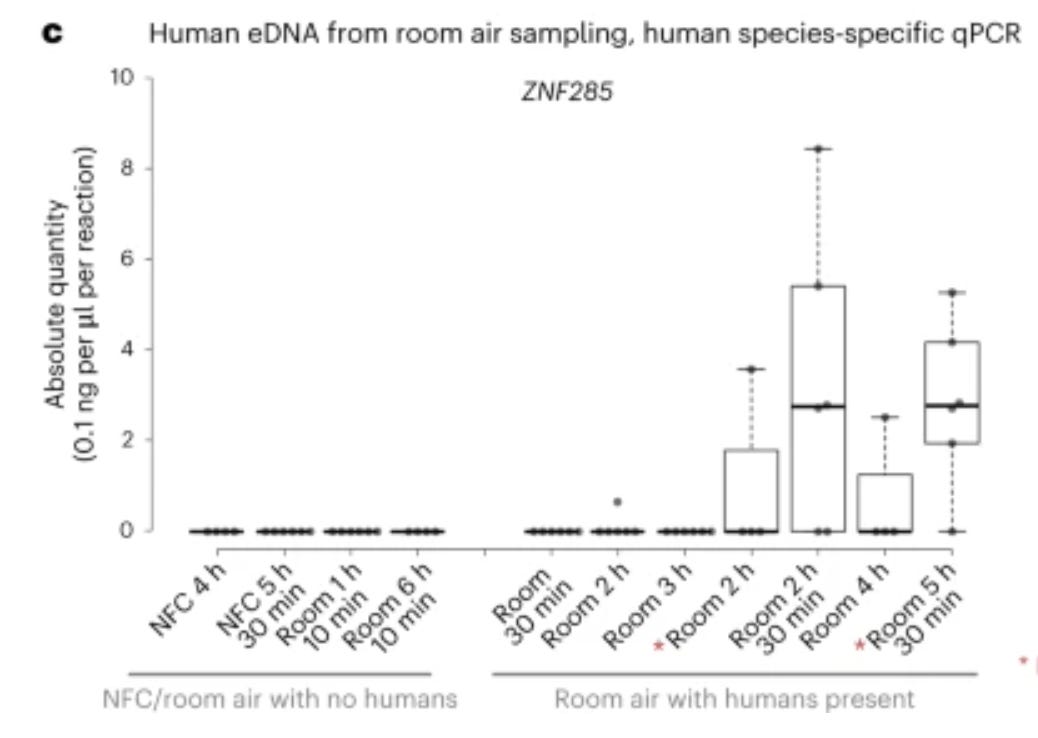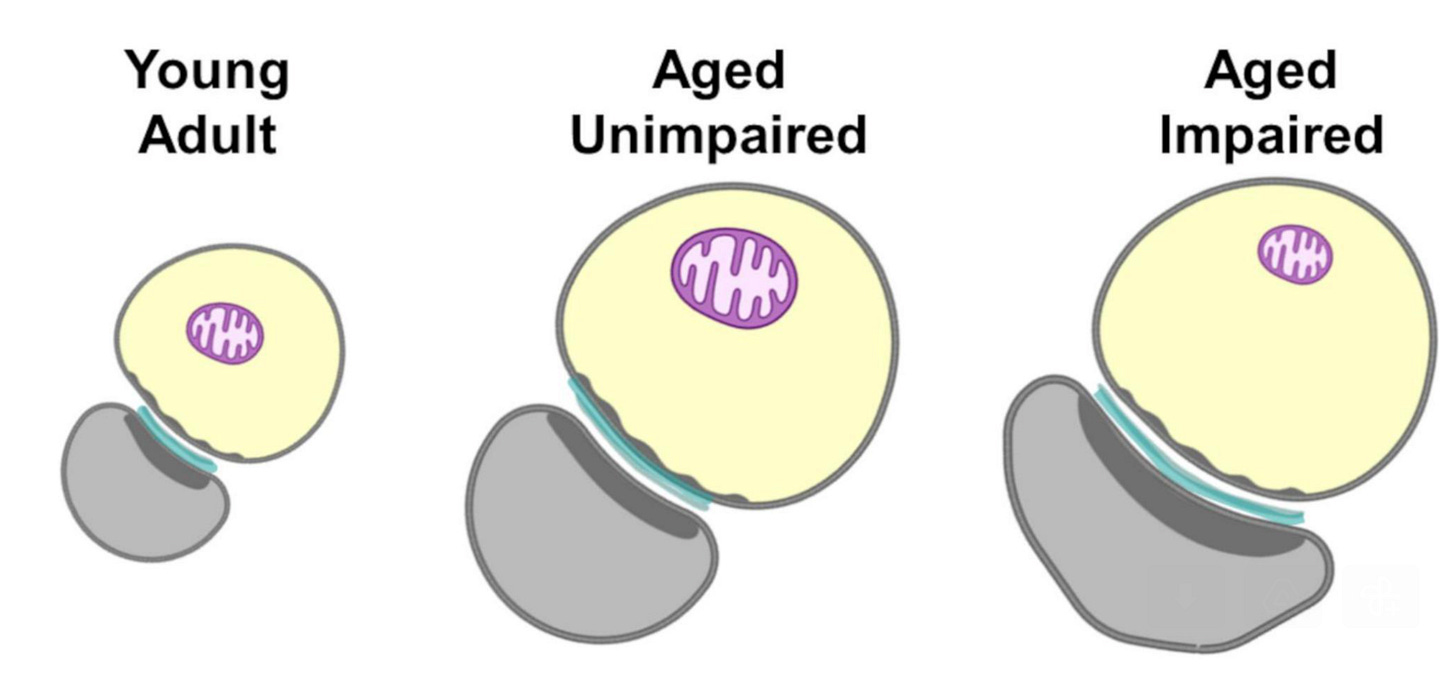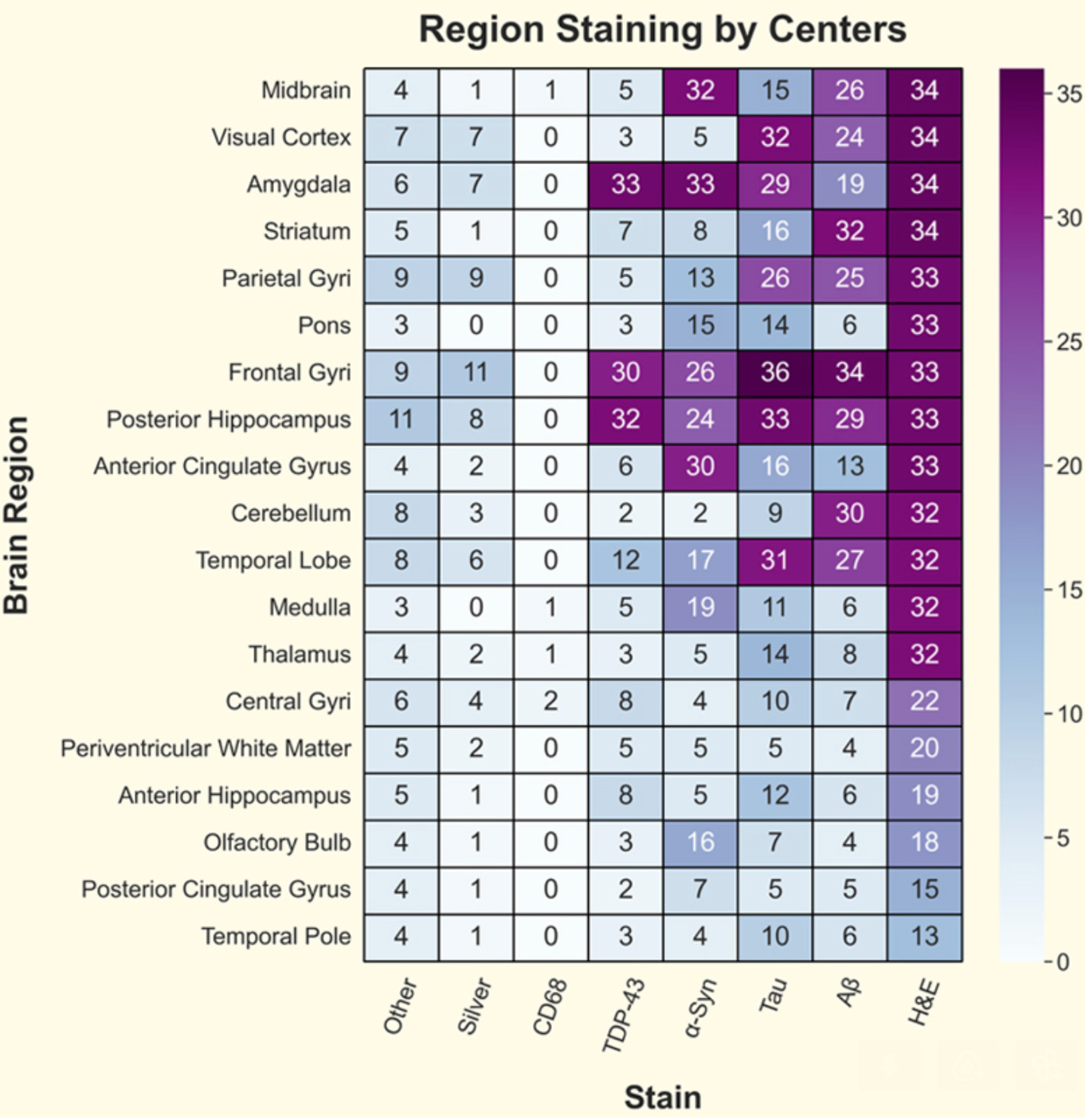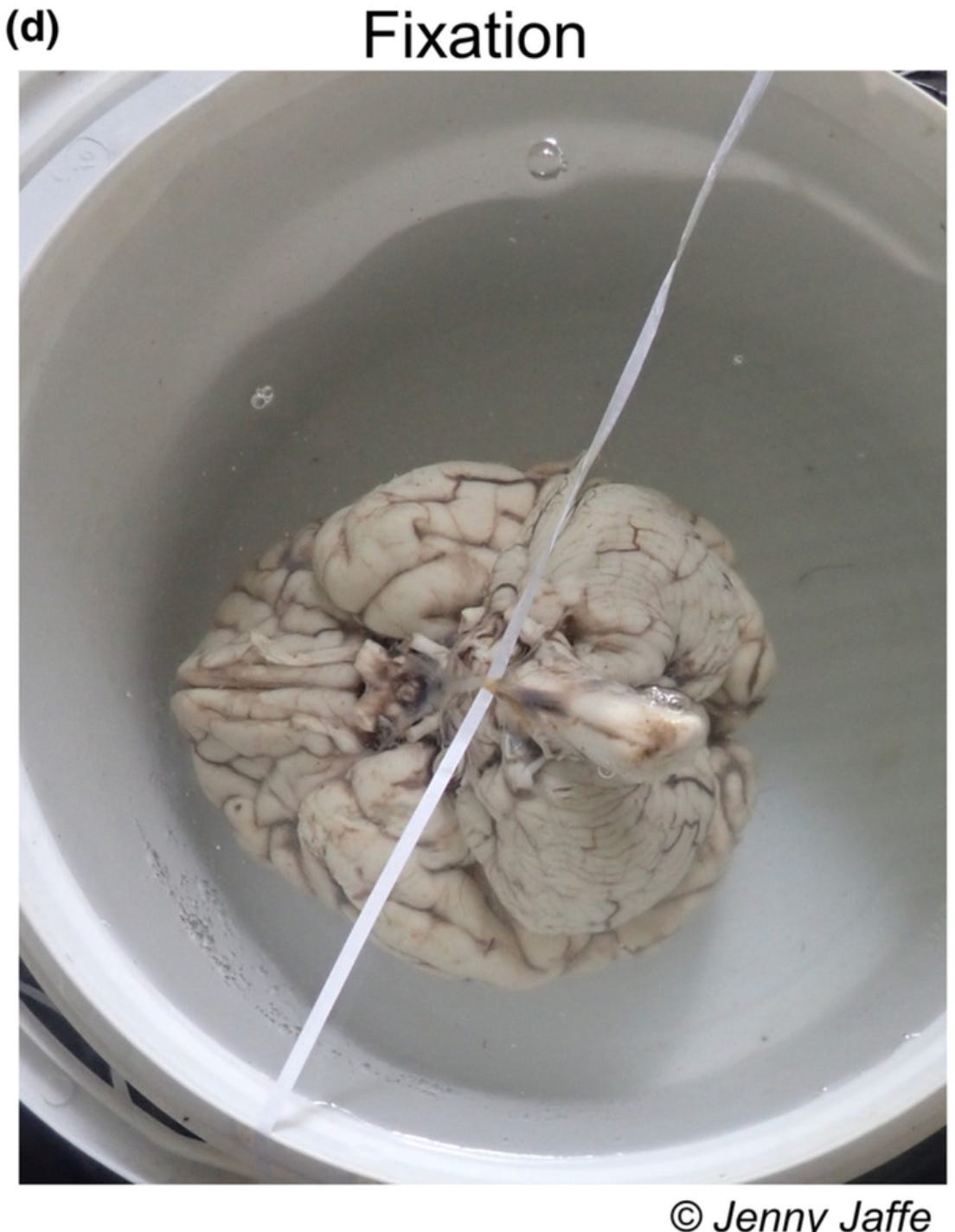Action Potentials for May
1: Scanning electron microscopy of cells in the mouse hippocampus alongside pre-embedding immunogold labeling for the synaptic marker gephyrin. This allowed for 3d morphological reconstructions annotated by excitatory and inhibitory synaptic inputs:

2: The neural circuitry for head orientation in zebrafish, which the authors call r1π neurons, allows for persistent neuronal representations of this body state. It has what the authors call a “simple” topographic organization.
3: Boundary neurons that selectively fire at the edge of one wall of a water tank are identified in swimming goldfish.
4: A new method for contrastive learning to generate latent embeddings of electrophysiology data, called CEBRA. They used the method on V1 calcium recordings in mice to decode the video that the mice watched, with good accuracy:
5: Improvements in fMRI. Now down to the millisecond time scale. Also better spatial resolution, potentially via measuring dynamic changes in cellular morphology. Although what the new method (DIANA) is visualizing is up for debate, and, as far as I know, it hasn’t been shown to work yet in humans.
6: Selectively inhibiting the callosal projections of parvalbumin neurons in the prefrontal cortex desynchronizes the gamma frequency rhythm necessary for learning in mice.
7: Hippocampome.org: a website with data for spiking neural network simulations of the rodent hippocampus. For example, here are firing pattern parameters for different neuron types:
8: A challenge to use machine learning to read text from papyrus scrolls carbonized by the eruption of Mount Vesuvius in 79 AD.
9: Collecting human environmental DNA (eDNA) from the air.
10: Study finds news reports have been getting more depressing since 2000. Not good.
11: A new study subtypes autism spectrum disorder into three categories. They find that one of these subtypes shares a lot of characteristics with schizophrenia, in terms of genetics, antipsychotic use, and neuroanatomy.
12: In a new RCT (n = 410), mindfulness-based cognitive therapy self-help was more clinically effective and cost-effective than cognitive behavioral therapy self-help in reducing depression symptoms in adults with mild to moderate depression. The between-group difference was −1.5 PHQ-9 points (P = .009). This was the self-help book the study used, along with 6 support sessions with a trained practitioner.
13: “Although there were numerous presentations and posters regarding trendy psilocybin and other psychedelic research there was not a single lecture or poster mentioning anosognosia at the conference [ACNP]" - Anthony Rothschild
14: New trial will use IVIG followed by rituximab in a subset of people with psychosis to further test the hypothesis of an immune etiology.
15: A trial of IV ketamine compared to placebo masked by surgical anesthesia in depressed patients. Finds no significant difference in clinical response rates, which were comparable to previous studies of ketamine in people with depression. A lot of thoughts: maybe the surgery itself was beneficial, maybe propofol is also an antidepressant and masked the effects, and/or maybe ketamine’s antidepressant effects are driven in part by expectancy bias.
16: Study finds cognitive impairment in aging is associated with a decoupling of mitochondrial size from synapse size.
17: Study finds that aging increases the rate of transcription.
18: Review of the use of off-label rapamycin in 333 people as an anti-aging (“healthspan”) treatment. Most common self-reported changes in physiology:
Overall, participants reported a significantly better quality of life since beginning off label-use of rapamycin, although that obviously could have been due to a placebo effect.
19: Very big news in Alzheimer’s this month as Eli Lilly reported that their antibody drug donanemab, which reduces the level of a form of aggregated amyloid plaque, slowed cognitive decline by ~40% on the primary outcome measure. Amyloid hypothesis folks are having a day. This is a press release so it needs a grain of salt, but this seems like an important advance over the status quo.
20: Which stains are used and which brain regions are sampled in Alzheimer’s Disease brain banks?
21: Eric Minikel on what the FDA approval of tofersen, an antisense oligonucleotide drug for SOD1 ALS, means for the use of antisense oligonucleotides in prion disease.
22: mRNA neoantigen vaccine in pancreatic ductal adenocarcinoma has good efficacy in responders who generated an immune response.
As friend of the blog Ranjan Upadhyay so eloquently put it: “🚨 wow 🚨 wow 🚨 wow 🚨”
23: The European Institute for Brain Research - a new connectomics research organization directed by Borys Wrobel.
24: Aschwin de Wolf makes a case for brain-only preservation.
25: It seems that frog species that have adapted for longer hibernation (brumation) durations also have small brain sizes. Maybe this is because maintaining a larger brain in the hibernating state is more difficult.
26: Focused ultrasound for rewarming C. elegans to prevent recrystallization in cryopreservation.
27: New protocol for preserving primate brains at remote field sites. The chimpanzees they studied had an average postmortem interval of 12 ± 8 hours. N = 2 were killed via leopard attack. After removing the brain from the skull with an oscillating saw, it was fixed via immersion in formalin in a plastic bucket:
They reported that white matter tracts were well preserved on postmortem diffusion MRI and there was “very good tissue preservation” on the light microscopy level:
28: Peter Thiel on cryonics: "People have a choice to accept death, deny it, or fight it. I think our society is dominated by people who are into denial or acceptance, and I prefer to fight it."
This resonates with me. Still, I can't help but think of Don Quixote. Sure, fighting death sounds noble, but how do we know if we are just tilting at windmills? In my view, the question of technical feasibility cannot be avoided.




